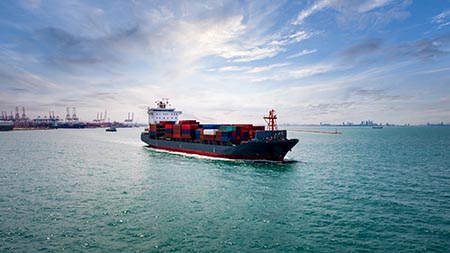
How Sea Transport Powers Global Trade and Keeps Costs Low
Sea transport has been the backbone of international trade for centuries. Even in today’s high-speed world, where air freight offers unmatched speed, ocean shipping remains the most cost-effective and reliable way to move large volumes of goods across continents. For Canadian businesses that rely on importing and exporting, sea transport continues to play a critical role in keeping supply chains strong and costs manageable.
The Role of Sea Transport in Global Trade
Over 90% of global trade is carried by sea. Cargo ships move everything from consumer goods and electronics to vehicles, machinery, and raw materials. This makes sea transport the most important link in global commerce. For businesses in Ontario and across Canada, ports act as vital gateways to international markets, ensuring that goods can move in and out of the country efficiently.
Benefits of Sea Transport
-
Cost-Effectiveness
Sea freight is significantly more affordable than air transport, especially for large or bulky shipments. Businesses moving containers full of goods save money by using ocean shipping, allowing them to maximize profits. -
Capacity for Large Volumes
Ships are capable of carrying massive quantities of cargo. Whether it’s raw materials or finished products, sea transport can handle goods that would be impossible or too costly to move by air. -
Global Connectivity
Ports are connected across every major continent. This global reach makes sea freight the most practical solution for long-distance trade. -
Environmental Efficiency
Compared to other forms of transport, ships are relatively fuel-efficient for the amount of cargo they move, making them a more sustainable choice for global logistics.
When to Use Sea Transport
Sea freight is ideal for:
-
Large shipments and bulk cargo.
-
Non-urgent deliveries where speed is not the top priority.
-
Heavy or oversized items such as vehicles, equipment, or raw materials.
-
Businesses looking for cost-effective international shipping.
Challenges to Consider
While sea transport offers great value, it also has longer transit times compared to air freight. Weather conditions, port delays, and customs clearance can sometimes add to delivery schedules. However, with careful planning and a reliable logistics partner, these challenges can be managed effectively.
The Canadian Advantage
Canada’s strategic location gives businesses access to both Atlantic and Pacific trade routes. Toronto businesses, in particular, benefit from nearby ports that connect to global shipping networks. This makes it easier to trade with partners in North America, Europe, and Asia, supporting business growth and international expansion.
Conclusion
Sea transport is the lifeline of global trade, offering an unbeatable combination of capacity, affordability, and international reach. While it may not be the fastest method, it remains the most practical solution for businesses moving large volumes of goods worldwide.
For Canadian companies, choosing sea freight helps reduce costs, expand global opportunities, and strengthen supply chains. By working with a trusted shipping and logistics partner, businesses can ensure their cargo moves safely and efficiently across oceans, keeping them competitive in today’s global marketplace.
Leave A Comment